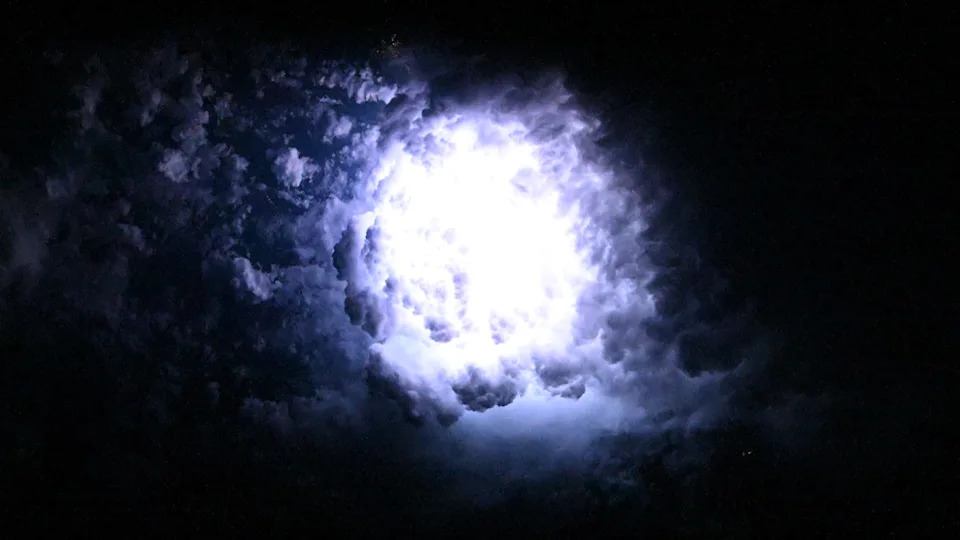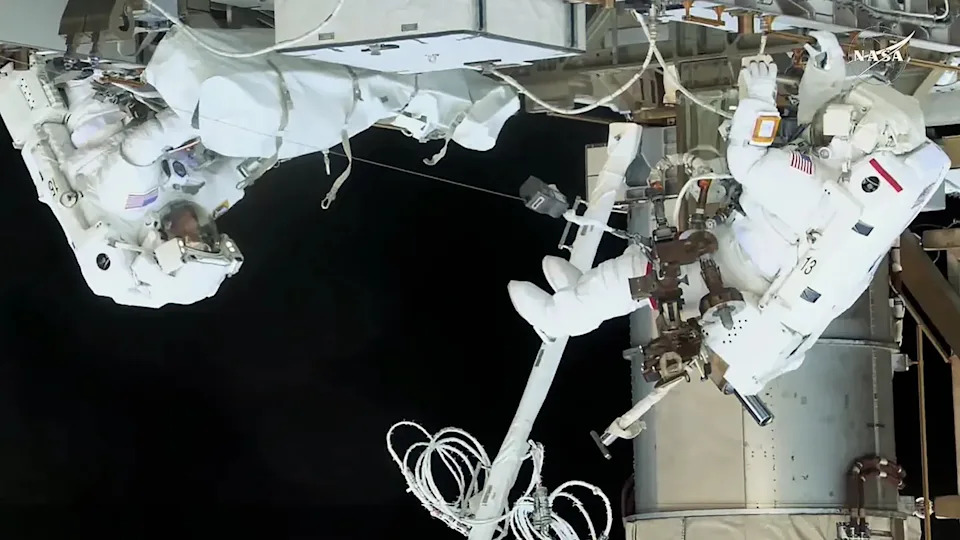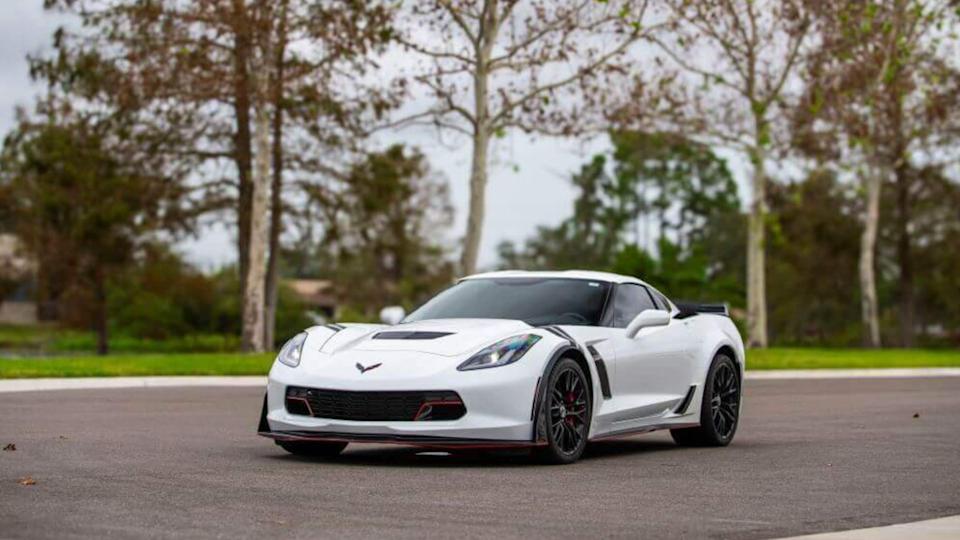NASA astronaut captures rare phenomenon from 250 miles above Earth: See photo of 'sprite'
A NASA astronaut drifting high above Earth recently managed to capture a rare phenomenon that scientists have been working to understand for about three decades.
Known as a "sprite," the atmospheric event is associated with lightning and is incredibly difficult to capture from the ground since it typically occurs about 50 miles high above the clouds.
But on the International Space Station, which orbits about 250 miles above Earth, astronaut Nichole Ayers has a better view of weather systems. That cosmic vantage, and her budding expertise in astral photography, is what allowed Ayers to snap a stunning photo of a sprite.
Space Shuttle Discovery: Trump 'Big Beautiful Bill' provides $85 million to move a NASA space shuttle
Here's what to know about "sprites," as well as a look at what Ayers photographed.
Astronaut on International Space Station captures rare 'sprite’ phenomenon on Earth
 NASA astronaut Nichole Ayers captured this photo of what is known as a Transient Luminous Event above the clouds of a thunderstorm while orbiting above Earth on the International Space Station.
NASA astronaut Nichole Ayers captured this photo of what is known as a Transient Luminous Event above the clouds of a thunderstorm while orbiting above Earth on the International Space Station.As the space station drifted on the morning of July 3 over Mexico and the U.S., Ayers spotted and captured a rare phenomenon known as a "sprite" far below that's only triggered by thunderstorms.
As Ayers explained, sprites are what scientists refer to as transient luminous events (TLEs) that happen above the clouds during periods of intense electrical activity, like lightning.
"Just. Wow," Ayers said on social media.
Sprites, named for mythical fairy-like creatures, appear when lightning interacts with nitrogen in Earth's atmosphere to create an electrical breakdown that produces flashes of red light. Sometimes, the sprites appear to have long red tendrils that lend the nickname "jellyfish sprites," according to NASA's Earth Observatory, which shares satellite images of Earth.
The phenomenon can also be difficult to photograph from Earth, as the night sky must be clear of clouds. But astronauts on the space station have a unique vantage that allows them to set up cameras on the outpost's cupola to capture timelapse sequences with a broad field of view.
Scientists still know very little about sprites, but photos like the one Ayers managed to snap should help them learn more.
"We have a great view above the clouds, so scientists can use these types of pictures to better understand the formation, characteristics, and relationship of TLEs to thunderstorms," Ayers concluded in her post.
Ayers also photographed lightning from space
 NASA astronaut Anne McClain captured several images in May of lightning as seen from the International Space Station. The technique, in which images are taken at 120 frames per second, was pioneered by astronaut Don Pettit, who recently departed the station.
NASA astronaut Anne McClain captured several images in May of lightning as seen from the International Space Station. The technique, in which images are taken at 120 frames per second, was pioneered by astronaut Don Pettit, who recently departed the station.This isn't the first time Ayers' astral photography has led to some stunning images.
In May, Ayers posted photos on social media site X of lightning roiling far, far beneath the International Space Station.
In Ayers'post on X, she said she first observed lightning May 1 while suited up for a spacewalk outside the orbital outpost. She then managed to capture a few photos the next day, which she shared May 5.
Fellow NASA astronaut Anne McClain also photographed the rare phenomenon.
Who is on the International Space Station?
 NASA spacewalkers (from left) Nichole Ayers and Anne McClain work together at the International Space Station’s Port-4 truss structure to install a modification kit readying the orbital outpost for a future rollout solar array.
NASA spacewalkers (from left) Nichole Ayers and Anne McClain work together at the International Space Station’s Port-4 truss structure to install a modification kit readying the orbital outpost for a future rollout solar array.Ayers, whomade headlines in May forcompleting a rare all-female spacewalk, is one of 11 people living aboard the International Space Station.
Ayers arrived at the orbital laboratory in March as part of a joint NASA and SpaceX mission known as Crew-10. Also on the mission is NASA astronaut Anne McClain, JAXA astronautTakuya Onishiand Roscosmos cosmonaut Kirill Peskov.
That mission also made headlines due to its role in paving the way for the NASA astronauts who crewedthedoomed Boeing Starlinerto depart with the Crew-9 mission.
The Crew-10 spacefarers are all part of Expedition 73 at the space station, where they are spending at least six months conducting scientific research and working to maintain the station. Expedition 73 also includes NASA astronaut Jonny Kim,who reached the ISS in Aprilwithcosmonauts Sergey Ryzhikov and Alexey Zubritsky.
Rounding out the orbital residents is the crew of a commercial spaceflight known as Axiom Mission 4.
NASA astronaut Peggy Whitson, Shubhanshu Shukla of India,Sławosz Uznański-Wiśniewski of Poland and Tibor Kapu of Hungary reached the space station June 25 on a two-week mission and are due to return home in the days ahead, though a date has not been announced.
Eric Lagatta is the Space Connect reporter for the USA TODAY Network. Reach him at [email protected]
This article originally appeared on USA TODAY: What is a sprite? NASA astronaut snaps rare weather event from space














